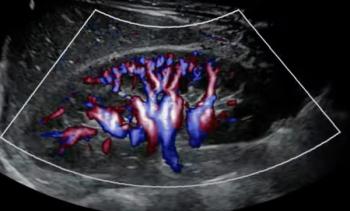
Combining AI Lesion Detection, Mammographic Texture Model Improves Breast Cancer Risk Assessment
The study demonstrated that the combined model yielded improved risk assessment for both interval and long-term breast cancers.
Recent advancements in mammography-based risk models have enabled the estimation of both short-term and long-term breast cancer risks. However, the potential benefit of combining these models to enhance risk assessment remains unexplored. A new study recently
The study involved a retrospective analysis of Danish women who underwent consecutive breast cancer screening from November 2012 to December 2015, with at least 5 years of follow-up data. Short-term risk was evaluated using a commercially available AI system that assigned a probability score for cancer detection. A separate mammographic texture model, trained on different data, assessed long-term cancer risk associated with specific textures. The area under the receiver operating characteristic curve (AUC) was used to evaluate individual and combined model performances for predicting future interval and long-term cancers in women with negative screening results.
The Danish screening cohort comprised 119,650 women, with 320 developing interval cancers and 1401 developing long-term cancers. The combination model, integrating AI lesion detection and mammographic texture assessment, demonstrated a higher AUC (0.73) for predicting interval and long-term cancers combined, compared to either the diagnostic AI system (AUC 0.70) or the texture model (AUC 0.66) alone. The top 10% of women identified by the combination model accounted for a significant proportion of interval cancers (44.1%) and long-term cancers (33.7%).
RELATED:
The study demonstrated that the combined model yielded improved risk assessment for both interval and long-term breast cancers. The AUC of 0.73 was higher than that of previously established risk models. Notably, the combination model accurately identified women at high risk, representing a substantial proportion of interval and long-term cancers. The study's limitations include the need for external validation in diverse populations and the relatively short follow-up period.
"Recent advances in AI-based breast cancer risk prediction models suggest more personalized breast cancer screening is within reach," wrote Clare B. Poynton, M.D., Ph.D., and Priscilla J. Slanetz, M.D., M.P.H, in an
"Image-based AI risk prediction clearly has the potential to individualize screening protocols by helping determine when a woman should start screening, the optimal frequency for screening, and possibly even when screening could be delayed or avoided altogether," they wrote. "However, further study of multiple risk algorithms in large diverse imaging data sets will be critical to compare varied approaches and, ultimately, to ensure that resources are appropriately directed toward populations who will benefit most from a more personalized approach to early breast cancer detection."
Newsletter
Stay at the forefront of radiology with the Diagnostic Imaging newsletter, delivering the latest news, clinical insights, and imaging advancements for today’s radiologists.




























